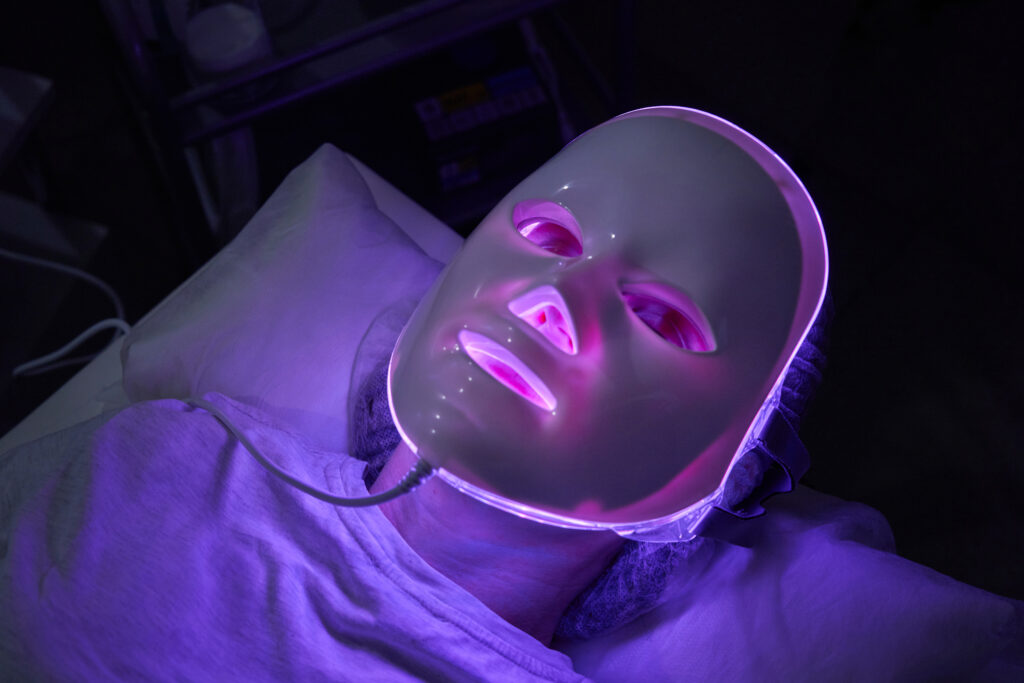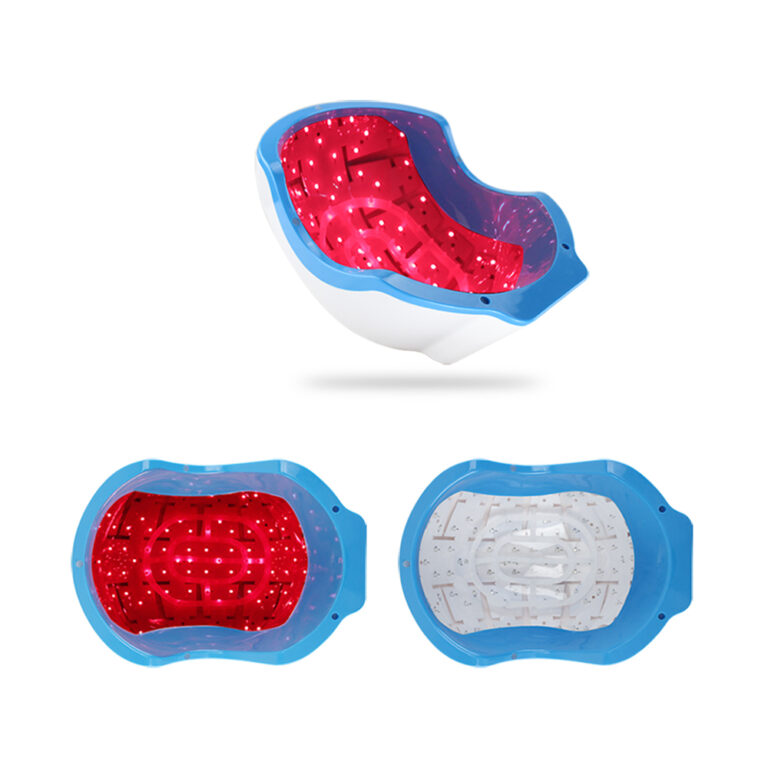Could Light Therapy Be the Solution for Your Acne?

If you’re one of the millions of people suffering from acne, you know how frustrating it can be to try treatment after treatment with no results. Topical creams, oral medications, and harsh ingredients often fail to deliver on their promises. But what if the solution was as simple as using light?
Recent research shows that controlled wavelengths of colored light, specifically blue and red, can have profound positive effects on acne-prone skin. Keep reading to learn how light therapy works and why it may be the acne cure you’ve been searching for.
Understanding Light Therapy for Acne
Light therapy, also known as phototherapy, uses LEDs (light emitting diodes) to deliver specific wavelengths of visible light. It’s a painless, drug-free treatment that utilizes light’s properties and interaction with human cells and tissues.
In the case of acne, blue light and red light target the bacteria, inflammation, and overactive oil glands that cause breakouts. The two colors can be used separately or together for enhanced effects.
Some of the ways these special lights combat acne include:
- Blue light: Destroys acne-causing bacteria like Propionibacterium acnes that live deep in the pores. Also helps prevent new pimples from forming.
- Red light: Reduces inflammation and swelling from existing breakouts. Decreases oil production to prevent future acne.
- Combined effect: Blue light tackles bacteria while red light fights inflammation for a synergistic dual-action approach.
Light therapy is an emerging acne solution that avoids the antibiotic resistance, side effects, and skin irritation of many traditional acne medications. It’s backed by extensive research proving its safety and efficacy.
Overview of the Available Research
Several high quality clinical studies support using blue and red light therapy for mild to moderate acne vulgaris. One especially compelling trial was published in 2013 in the British Journal of Dermatology, a prestigious peer-reviewed dermatology journal.
Clinical Trial Details
The double-blind, randomized controlled trial divided 35 patients with acne into two groups:
- Treatment group: Used a home-use LED mask with blue 420nm and red 660nm light.
- Control group: Used a sham device so researchers could isolate treatment effects.
Patients used the LED mask for 2.5 minutes twice daily for 4 weeks. After 12 weeks, the light therapy group experienced:
- 77% decrease in inflammatory lesions like papules and pustules
- 54% reduction in non-inflammatory lesions including blackheads and whiteheads
Meanwhile, the control group showed no statistically significant improvements.
Additional Findings
Beyond lesion reductions, the light mask also delivered measurable changes under the skin:
- Decreased sebum/oil production
- Reduced inflammatory cell infiltration responsible for pimples
- Shrinkage of sebaceous glands by up to 70%
Molecular analysis found blue and red light therapy reduced inflammatory markers like IL-1α, IL-8, TLR-2, and MMP-9. This demonstrates the measurable anti-inflammatory effects.
Study conclusion
This rigorous clinical trial adds to the evidence that LED light therapy can safely and effectively treat mild to moderate acne vulgaris. Using the combination mask just 2.5 minutes twice a day led to dramatic improvements after only 4 weeks.
Patients saw significant decreases in all types of acne lesions from non-inflammatory blackheads and whiteheads to inflammatory papules, pustules, and cysts. For many acne sufferers who struggle to control both kinds of lesions, this dual-action treatment is an appealing option.
Evaluating Light Therapy Masks and Devices
If you’re interested in trying LED light masks or devices after learning about the research, not all products are created equal. Here’s what to look for when choosing an effective and safe option:
Wavelengths: Devices should use wavelengths clinically proven for acne like 420nm blue light and 660nm red light. Avoid products using untested or questionable wavelengths.
Power Density: Aim for power densities of around 40-70 mW/cm2 for blue light and 60-100 mW/cm2 for red. Insufficient intensities may be ineffective.
Recommended Treatment Times: Optimal results require consistent use for at least 4 weeks. Look for recommended treatment times of 5-10 minutes once or twice per day.
FDA-Approved: Seek over-the-counter FDA-approved devices rather than non-approved products. This ensures safety standards.
Intended Use: Choose products specifically designed and marketed for acne, not general skin health. Parameters are tailored for acne-fighting efficacy.
Clinical Studies: Verify products are backed by peer-reviewed studies demonstrating acne reduction and safety. Don’t just rely on anecdotal reviews.
Vetting light therapy tools using these criteria can help you differentiate gimmicky devices from those likely to provide real results. Investing in an evidence-based, high-quality product gives you your best shot at success.
Trying Light Therapy Risk-Free
The good news is you can put LED light masks to the test in your own home before fully committing. Many companies offer generous return policies letting you return for a full refund if you don’t see the desired results within 30, 60, or 90 days.
As the clinical trials indicate, you’re likely to see at least some measurable acne-fighting effects in as little as 4 weeks. If you use the mask consistently during the trial period and don’t notice meaningful improvements in your breakouts, simply return it.
This makes it easy to give this promising acne solution a try risk-free. The only thing you have to lose is your acne!
Using Light Instead of Acne Medication
Light therapy masks are appealing because they avoid much of the downsides of prescription and over-the-counter acne medications. Possible issues with other treatments include:
- Dryness, peeling, irritation from topicals like benzoyl peroxide
- Side effects of oral antibiotics like nausea or dizziness
- Antibiotic resistance requiring new medications
- Hormonal effects of birth control pills and spironolactone
- Invasive procedures like steroid injections for cystic acne
The two most common side effects of LED light therapy are temporary dryness or mild redness. For most, these sensitivities fade within an hour after treatment.
Light therapy is also safe for all skin types and tones. The gentle wavelengths don’t contain UV radiation so they don’t damage skin like sunlight exposure. The risks of photosensitivity or burns are minimal.
For those hesitant about medications or those who haven’t responded to other acne treatments, light therapy offers a promising alternative with minimal downsides. The option to try it out risk-free and return products if dissatisfied makes it easy to test.
Integrating Light Therapy in Your Routine
Consistency and patience are key for optimal acne-fighting outcomes with LED light therapy. Here are some tips for seamlessly incorporating it into your skincare routine:
- Use light therapy as the first step after cleansing so the wavelengths can directly penetrate pores.
- Apply any topicals like benzoyl peroxide after your light mask session.
- Light therapy makes a convenient addition to existing regimens. Simply keep your usual skincare lineup the same.
- Use the mask during other activities like watching TV, listening to a podcast, or making breakfast.
- Set reminders on your phone if having a hard time remembering daily sessions.
- Stick with it even if your skin looks worse initially as acne surfaces. This is normal and means it’s working!
- Give it at least 6 weeks before evaluating results. Consistency is key.
Be diligent and patient through the initial phases of use to allow the light therapy time to work its magic. Follow the recommendations for optimal results.
Achieving Clear Skin with Proven Light Therapy
Incorporating blue and red light could be the missing step in your acne-fighting arsenal. This innovative treatment tackles the underlying causes of breakouts without irritating your skin. Clinical studies substantiate its ability to significantly reduce lesions.
Put FDA-approved, science-backed light masks to the test yourself. Commit to the recommended treatment plan and be diligent during the initial weeks as your skin adjusts.
With minimal downsides and the option to try risk-free, you have everything to gain and only acne to lose. Join believers worldwide who’ve discovered the power of using light to get clear, healthy, glowing skin. Your new acne-free complexion awaits! Impressed by light therapy? Get our RadiGlow LED Mask to get clear skin!
Reference
H.H. Kwon, J.B. Lee, J.Y. Yoon, S.Y. Park, H.H. Ryu, B.M. Park, Y.J. Kim, D.H. Suh, The clinical and histological effect of home‐use, combination blue–red LED phototherapy for mild‐to‐moderate acne vulgaris in Korean patients: a double‐blind, randomized controlled trial, British Journal of Dermatology, Volume 168, Issue 5, 1 May 2013, Pages 1088–1094, **https://doi.org/10.1111/bjd.12186**


